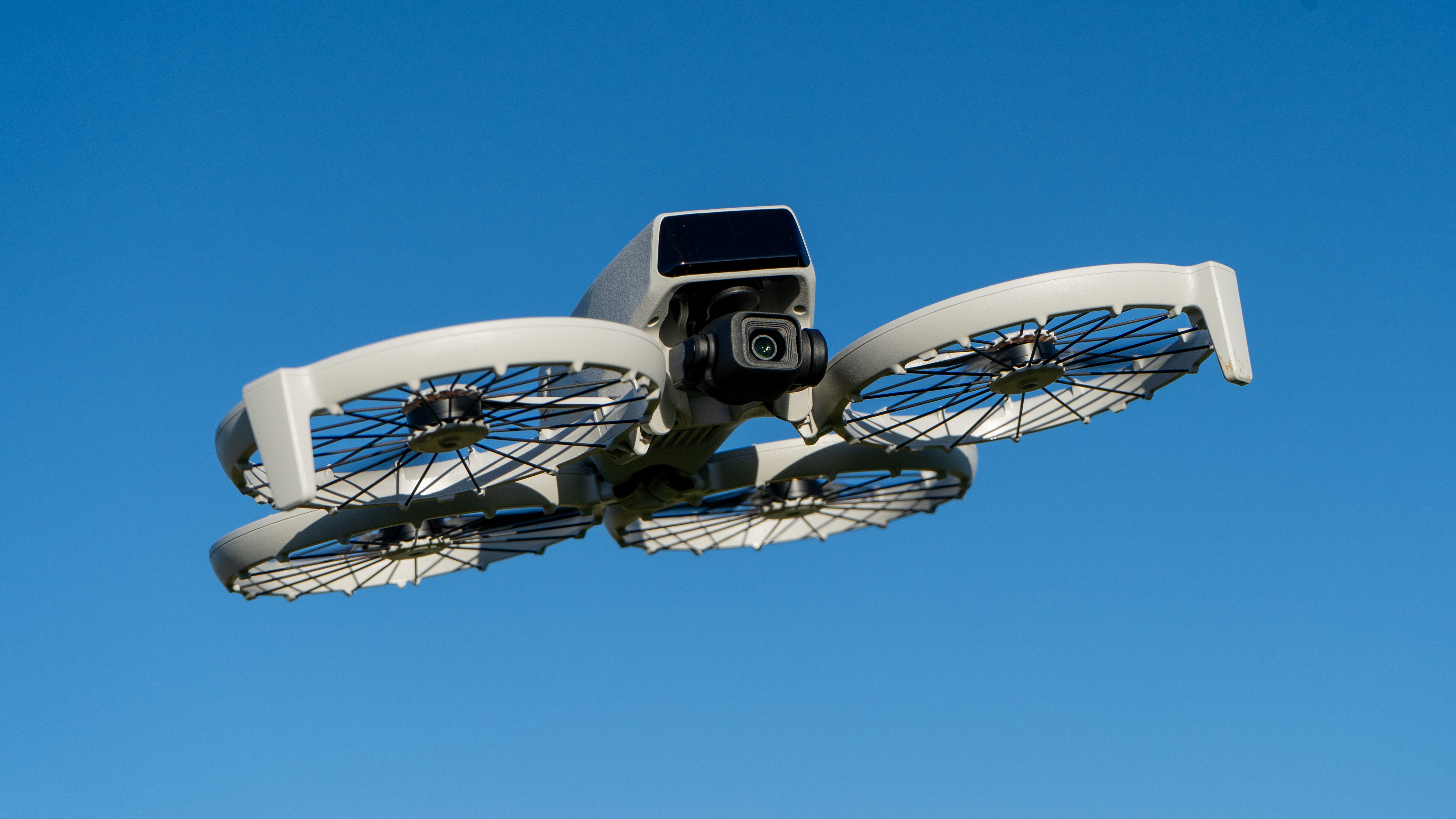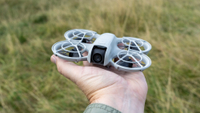Digital Camera World Verdict
The flip is a revolutionary extra-safe design that DJI is calling a "Vlog camera drone." It provides the same kind of high-quality stable video we've come to expect from DJI's line of category-beating ultralight drones, but with more protection. Safety seems to involve less compromise than worried me – arguably it improves the convenience.
Pros
- +
Great camera
- +
Brilliant new folding design protects propellors and is pocket friendly
- +
Best battery life for a drone with high safety
Cons
- -
Doesn't seem to enjoy the wind
- -
No 8K option
- -
Can only crop for social (camera does not rotate like Mini 4 Pro)
Why you can trust Digital Camera World
The DJI Flip marks yet another entirely new airframe design from DJI. Sure, there have been size & weight changes, camera improvements, and extra features but – until the recent DJI Neo – the consumer category hasn't seen much other than incremental changes since the folding revolution – and that came in 2016 with the Mavic Pro.
Is DJI suddenly in a hurry to innovate? To show America what it might miss out on if Chinese products get banned? Who knows, but if it makes for this much innovation from a company already ahead of the competition, it's hard to complain.
In any case, this drone combines the auto-tracking features of the Neo with a more powerful camera for a 'best of both worlds' travel / vlogging drone. It's a smart idea.
Since they seem to be looking to grow the market, safety seems to be DJI's main concern. The inclusion of spoke-like cages around the propellors makes it much harder to cause any harm with (or to) the props, especially the rotating ends. They also fold together to make a drone you can pocket – at least in a lint-free place – more easily than you'd expect despite a surprisingly large size.
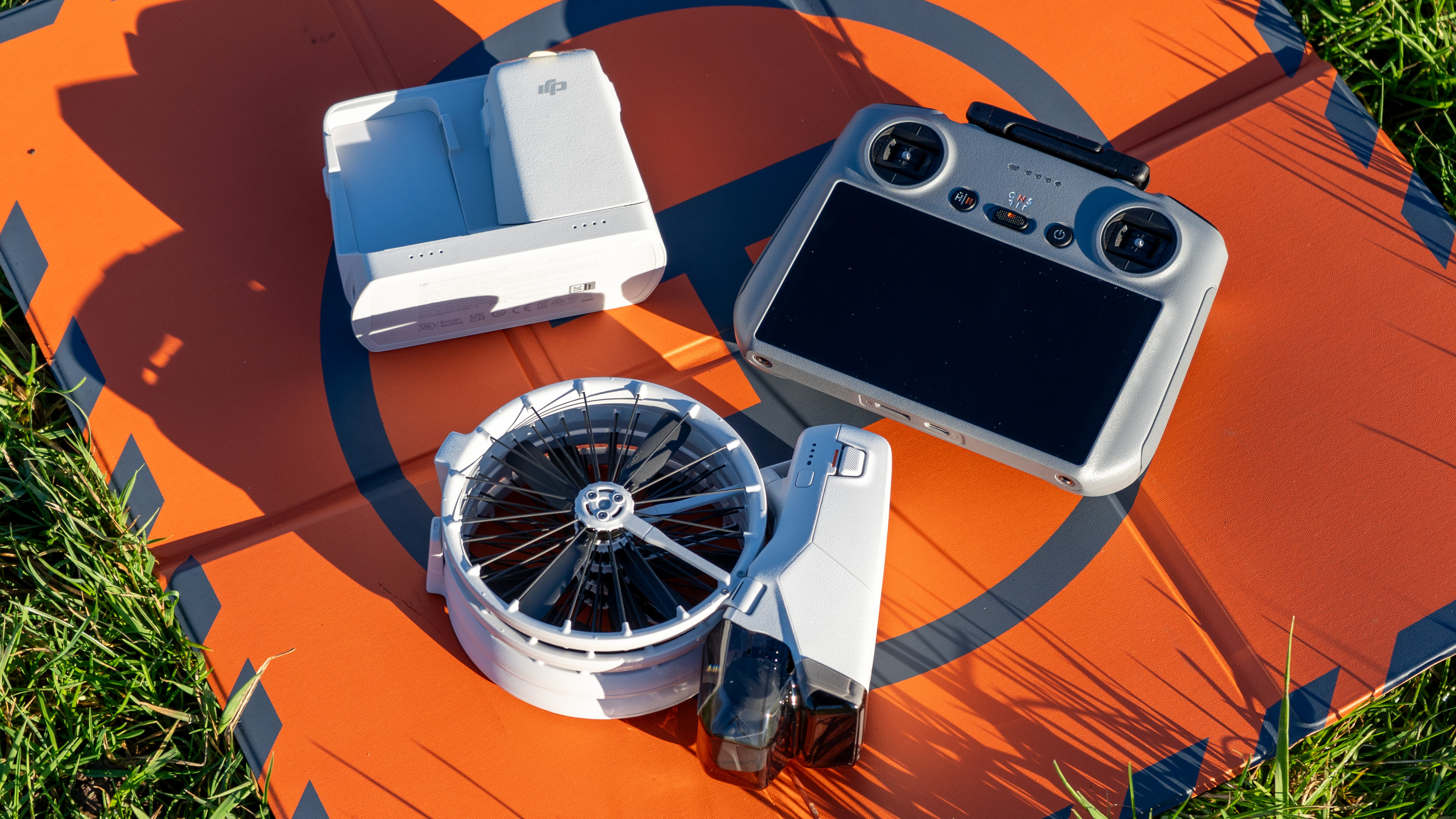
Specifications
Take-off weight | Under 249g |
Camera Sensor | 1/1.3-inch CMOS Dual Native ISO f/1.7 |
Maximum Video | 4K/60fps HDR |
Max image size | 48MP RAW 8064x6048px |
Range | 13Km / 8 miles (USA) 8Km elsewhere (with remote). |
Flight Time | Theoretical: 31 min (my testing was in the cold) |
Max speed | 12m/s (26 mph) when tracking or 16m/s |
Filed of View | 82.1 degrees (24m EFL) |
AI subject tracking options | Dronie, Circle, Spotlight, Helix, Boomerang (all without a controller) |
Price
With the drone at $439 / £369 / AU$699 for the base unit with one battery (which still includes a standard remote control), $639 / £549 / AU$949 with the RC2 controller (the one with the built-in display) and $779 / £659 / AU$1,159 for the Fly More combo (with 3 batteries, charging hub, RC2 & a bag) the drone represents good value for anyone looking to get decent aerial images & video on the go, sitting below the Mini 4 Pro but well above the Neo in the DJI range.

Build and handling
Given drones in this weight category have more or less all looked the same – even some competitors like the Potensic Atom – I found myself wondering how the drone, with all that extra material but the same 'magic' under 249g weight, could feel anything other than a bit flimsy.
It is nothing of the sort in the hand though. The difference seems to be the proportionally compact and light battery housing, which sits at the top back.
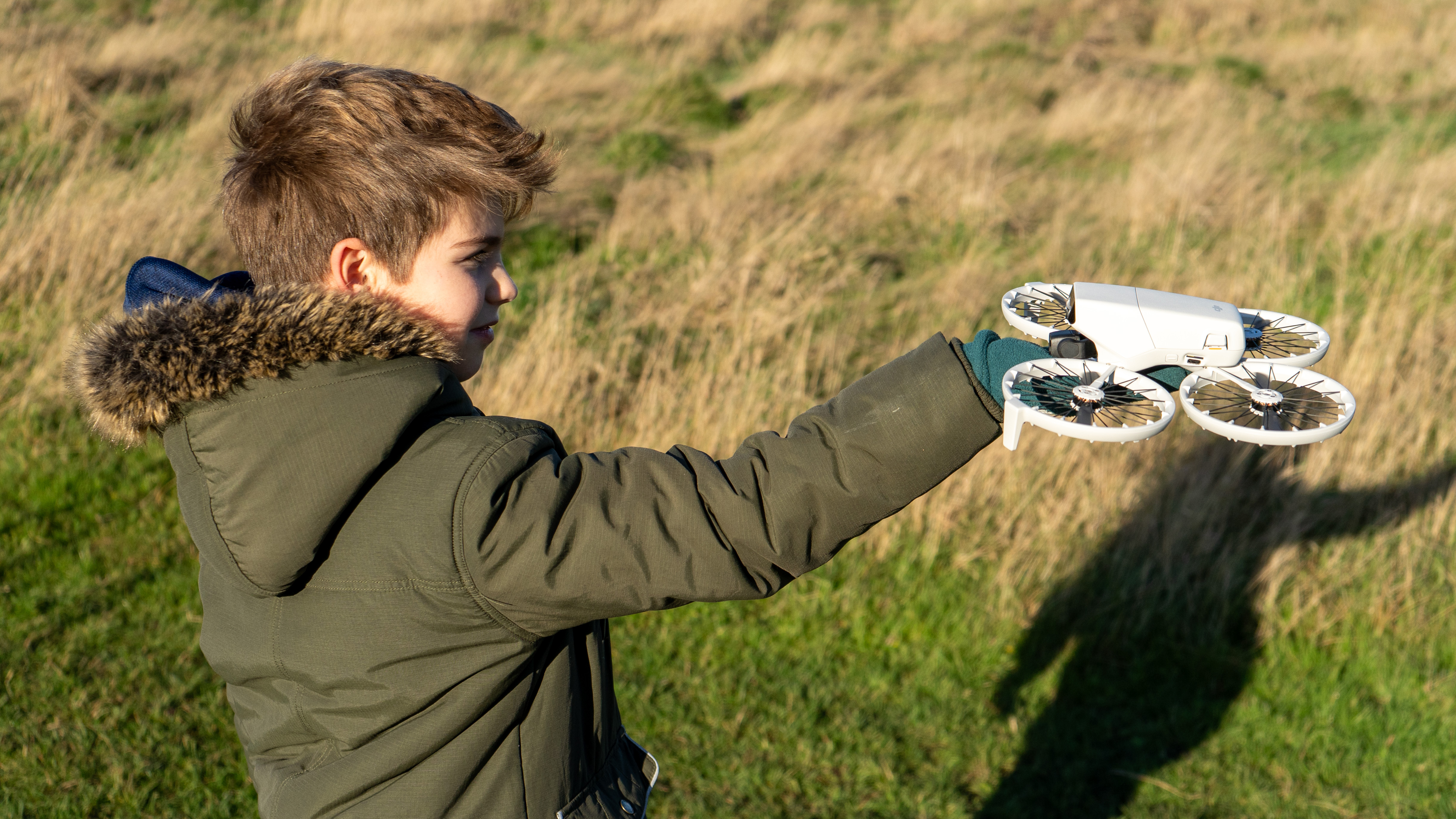
Folded up, the drone isn't a lot bigger than the tiny DJI Neo thanks to the neat stacking of the propellor cages. The spoke-based design is smart, though it is still easily possible to get a finger between the spokes at the rim (I know, I did). With your palm out it's fine though.
When open, the drone's cages snap reassuringly into place, revealing the sensor array that allows for easy hand landings.
At first glance, the design doesn't seem to allow for much camera tilt, but somehow the rings don't interfere and the gimbal is at once effectively caged by the front rings and top of the fuselage and able to tilt 90 degrees down and upward.
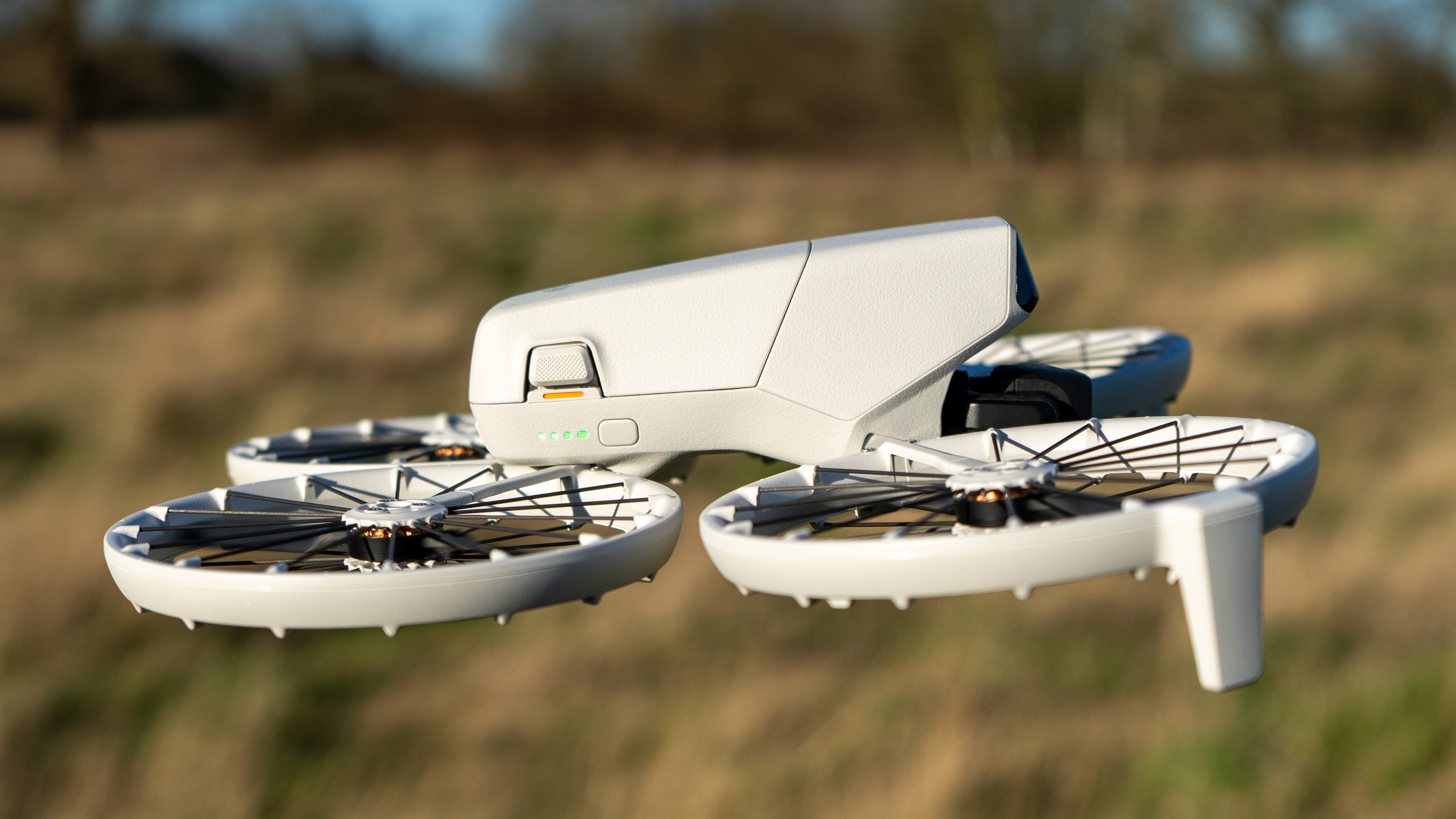
The rings also afford an advantage in some legal traditions (including the UK), where you are supposed to fly only as far as you can see the drone (or to a maximum distance). Now you can see it that bit further because, for an ultralight, it's bigger.
The drone has a MicroSD card slot on the side, and a USB-C for charging, though there is a charging hub for four (not DJI's usual 3) batteries at once. The only very, very slight irritation of the design is that you can only see two at once when you're checking the power status as they're 'flipped' back to back rather than in a row.
Performance
The drone has a good, if not amazing camera. I took it out on a day with very harsh light (testing in winter in the UK doesn't help matters; the sun is low in the sky, and the weather is cold and crisp).
I'd say a key lesson is that you're better off making sure you've got the option of RAW images, which do add some spare dynamic range (though perhaps less than you'd hope). Luckily DJI's quote mature camera software is ideal here, with features like exposure bracketing which sensible photographers will make use of.
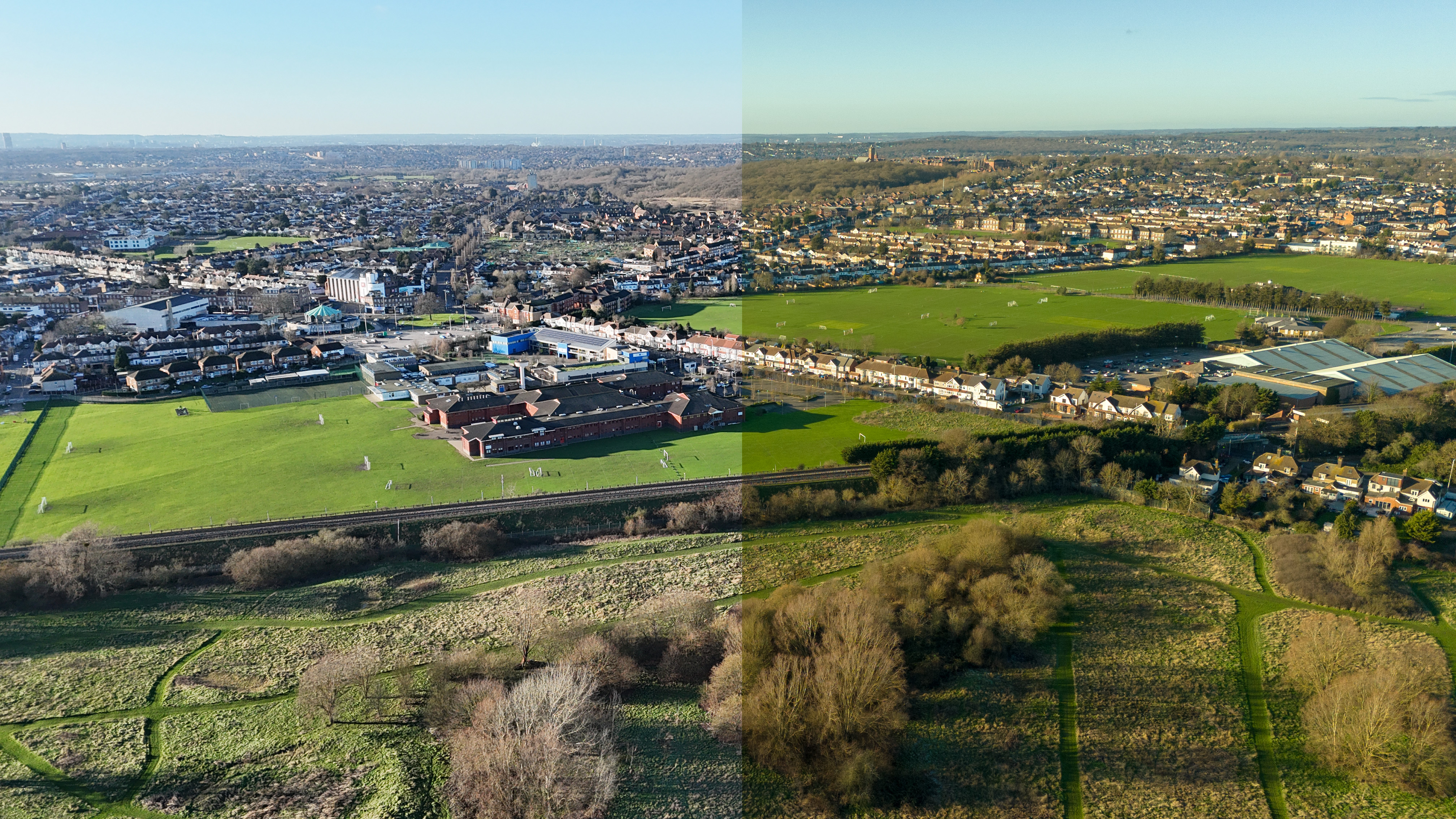
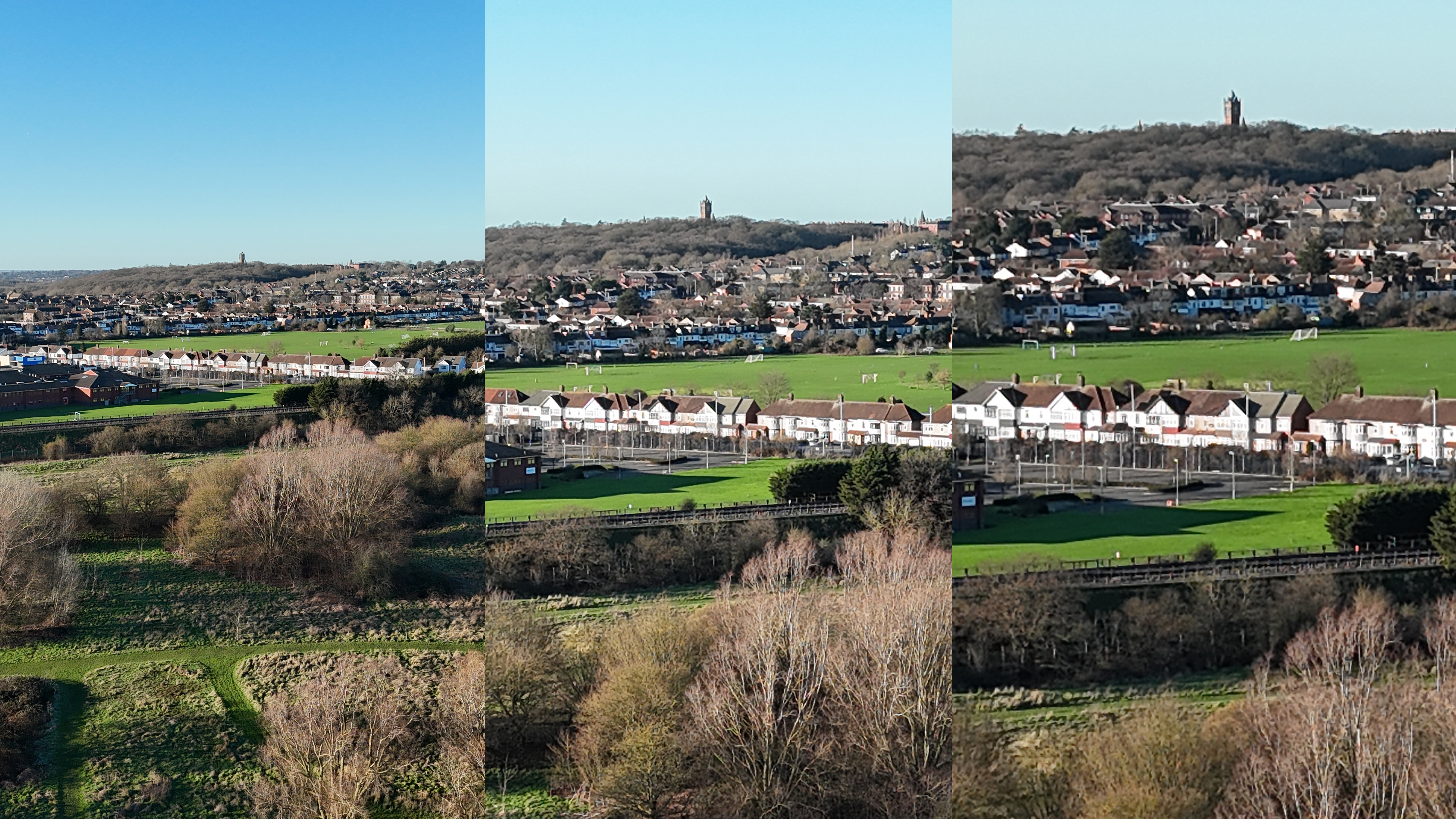
I can't say I was amazed by the digital zoom, but it's nice to have the option.
The 4K60fps video with HDR can capture at up to 150mbps which still compares well to some (and 4K/100fps slow-mo is mentioned, though I haven't tested it yet).
The real performance star, though, is the drone itself, which is so simple to launch from the hand (once you get used to the button placement) and is so good at recognising a hand (even in gloves) to land on again. The speaker is loud and clear too, so you're unlikely to make a mistake, which is useful – though with this drone there is enough battery to do a few retries!
Oh, and it is worth saying – for a drone specifically calling itself a vlogging drone – that this is, to my ear, even noisier than other drones – perhaps the sail area? So don't expect your clips to go unedited!
Image Samples
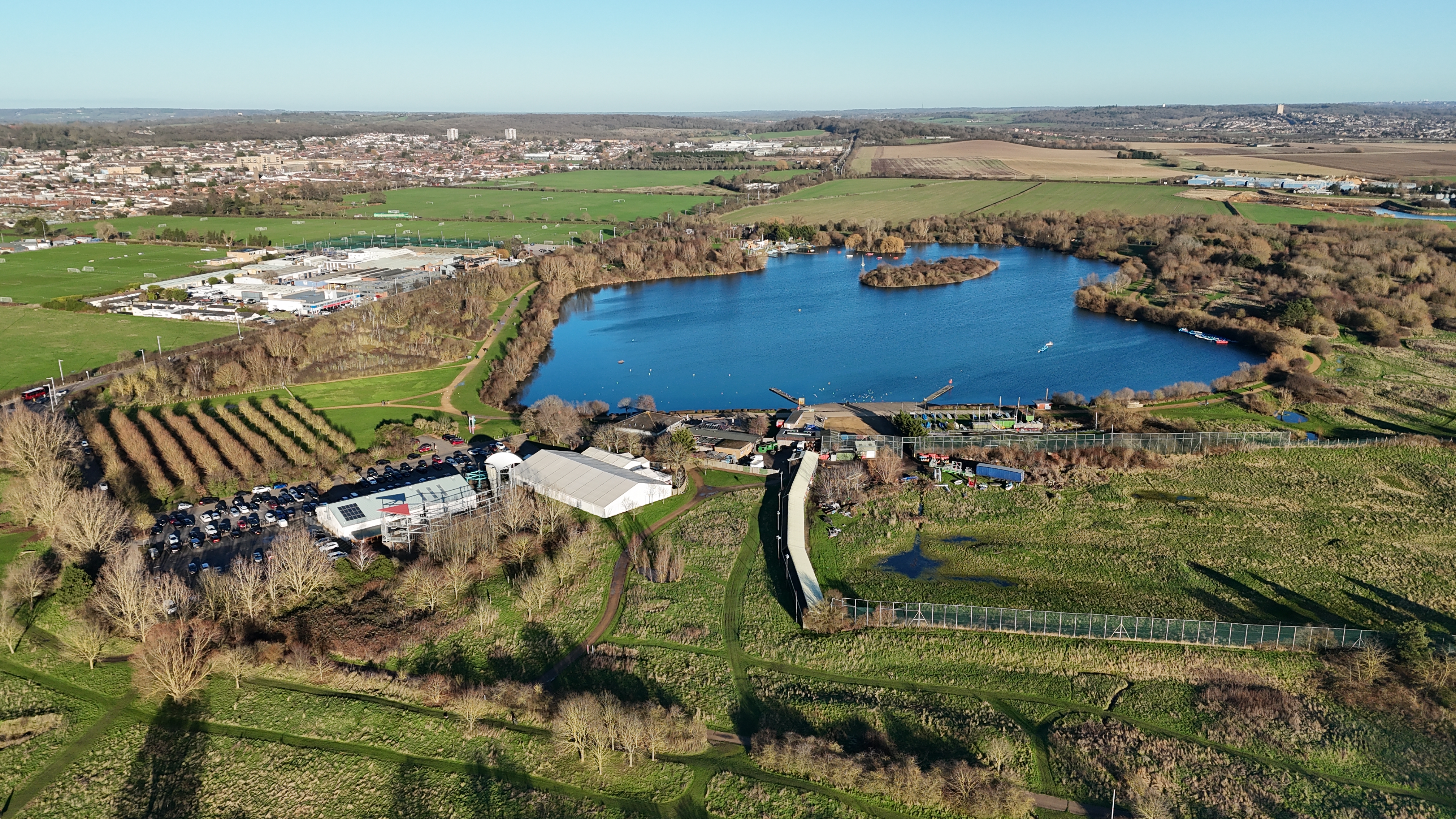
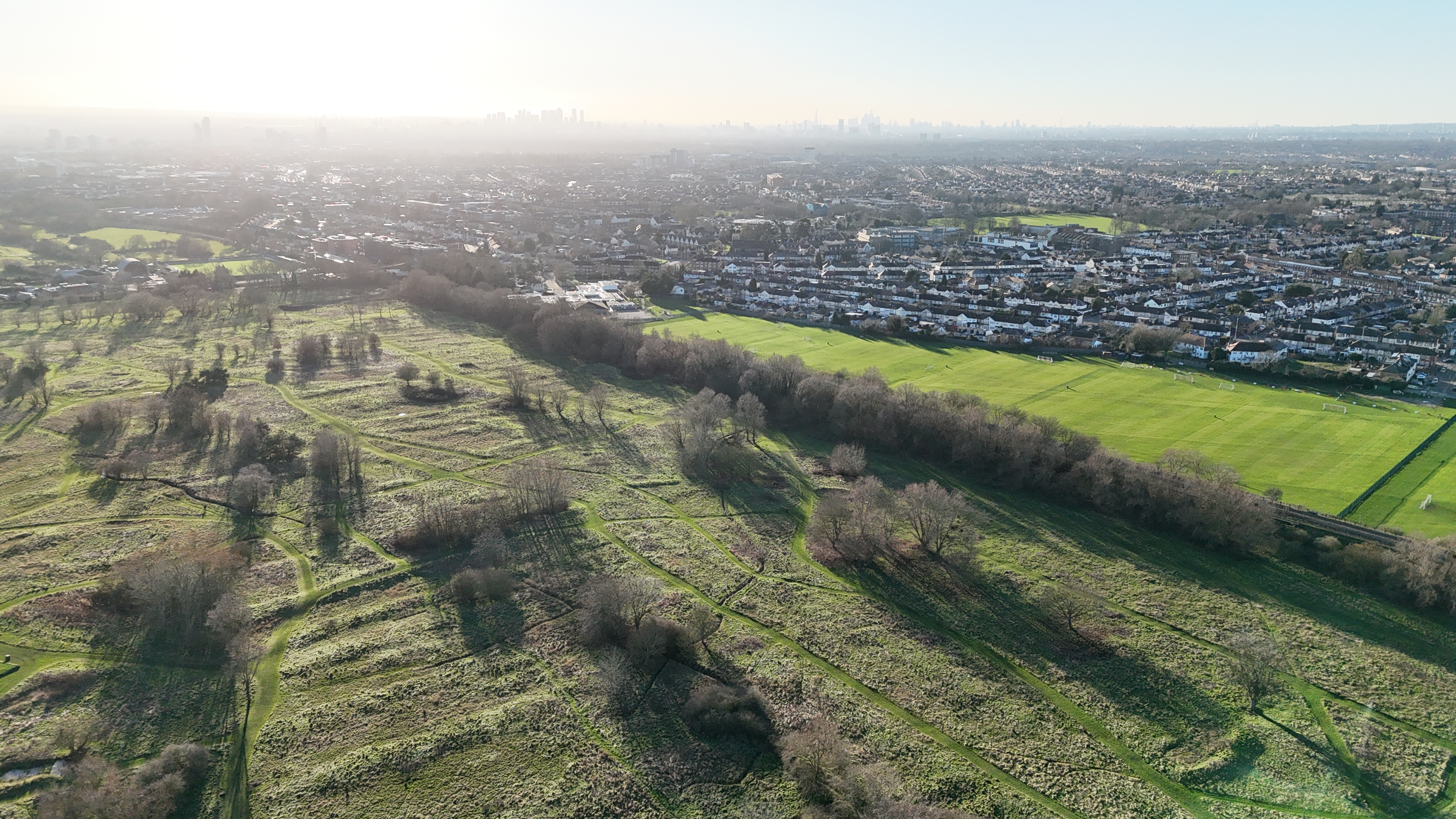
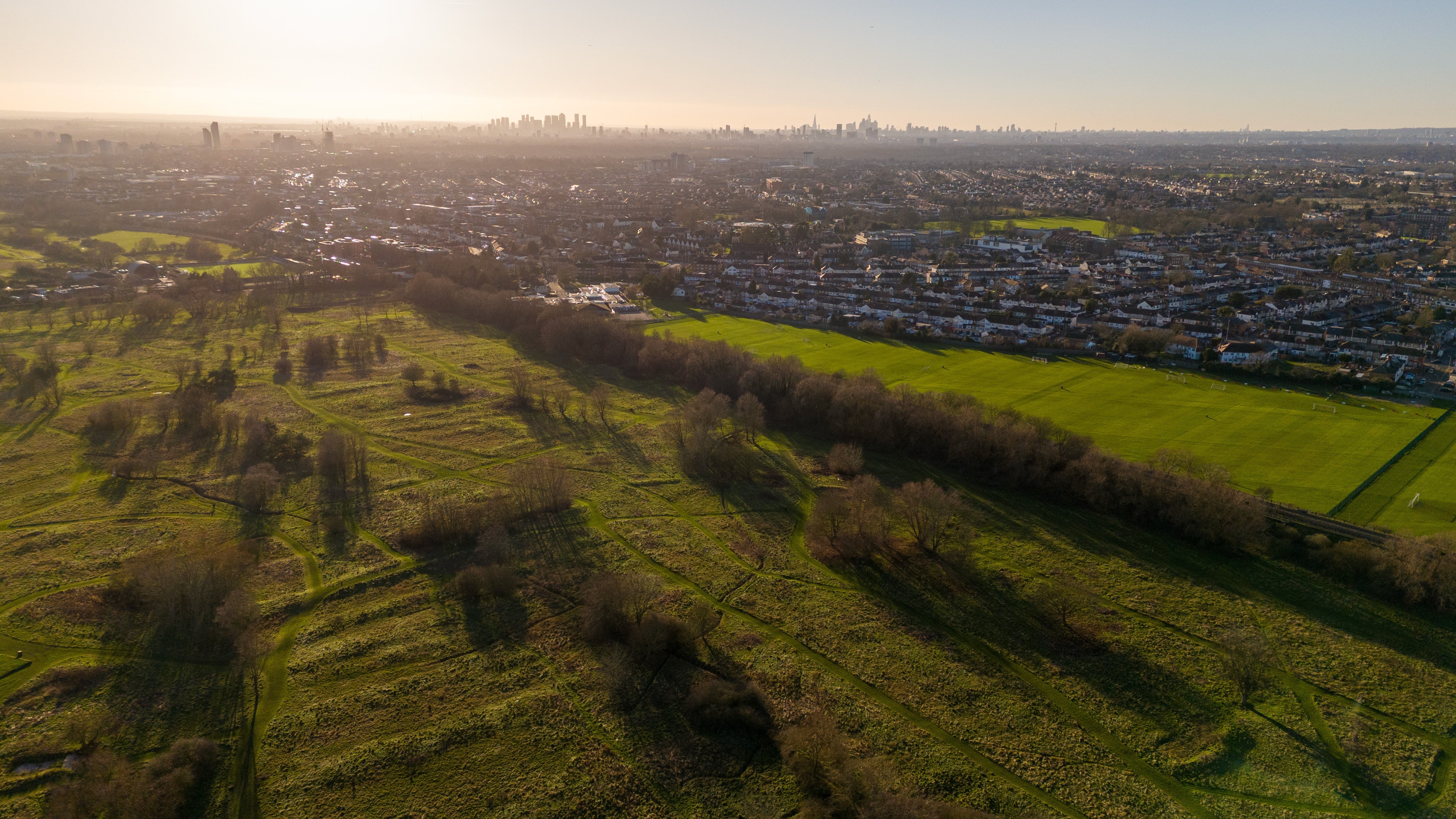
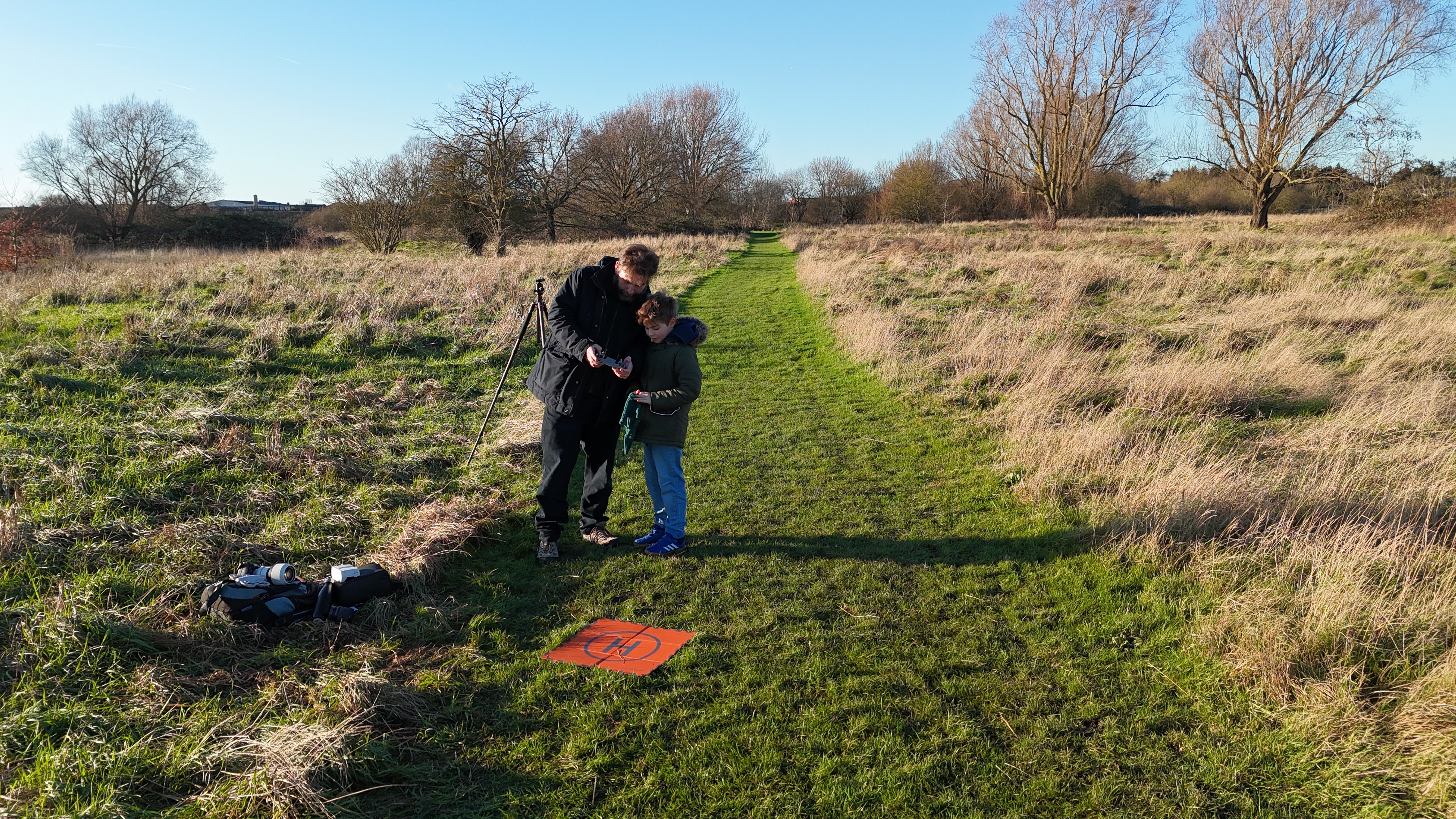
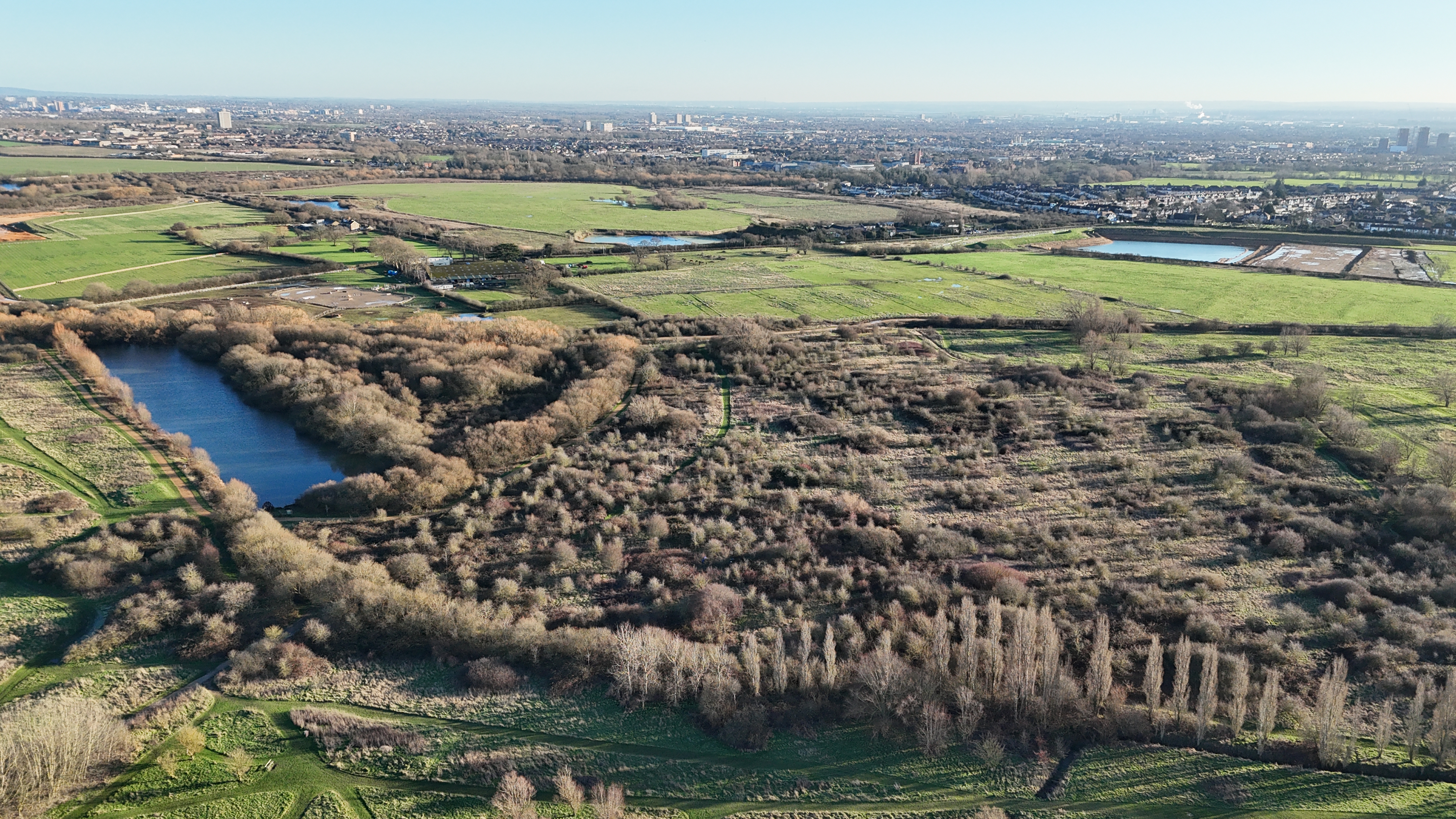
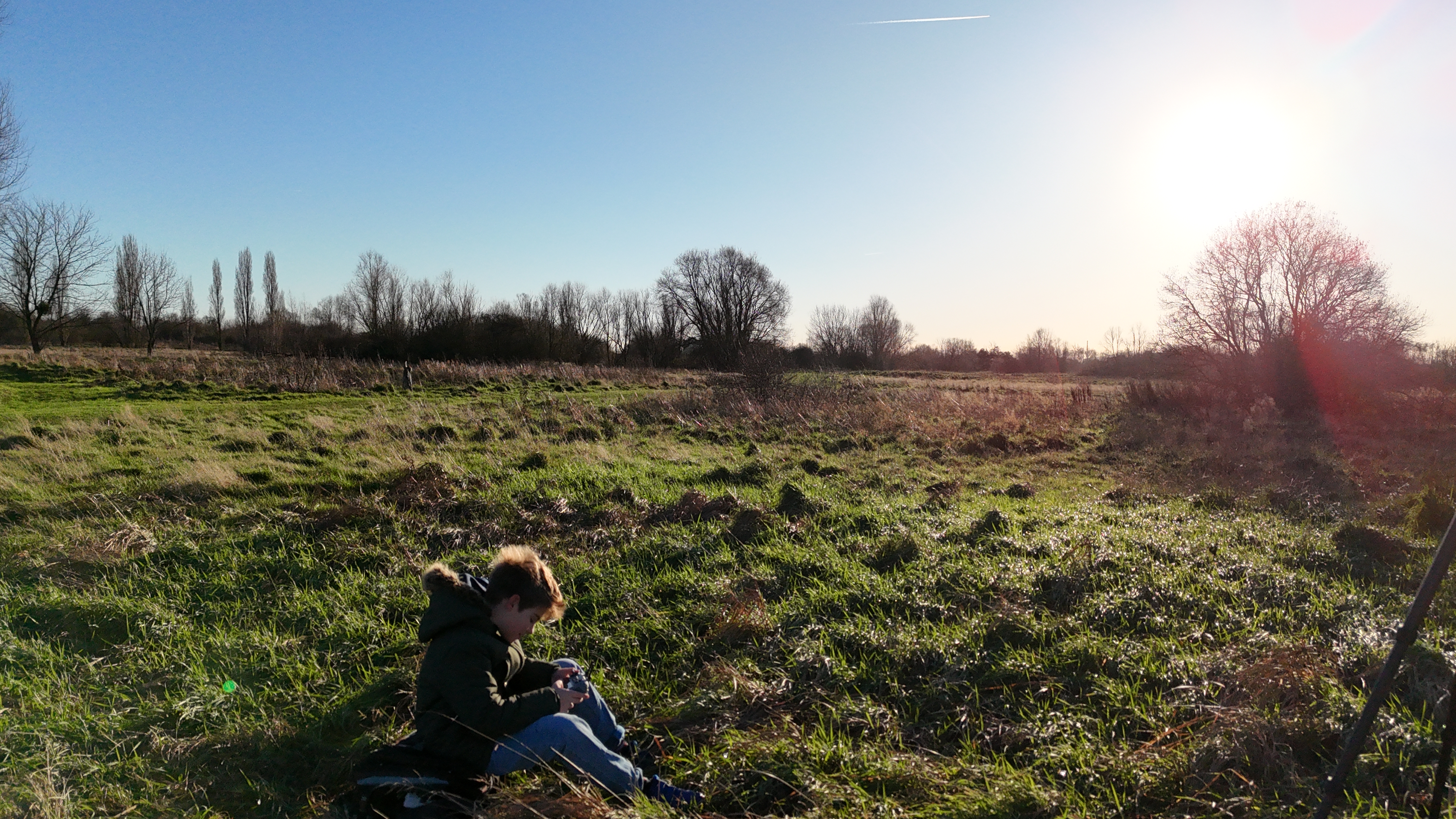
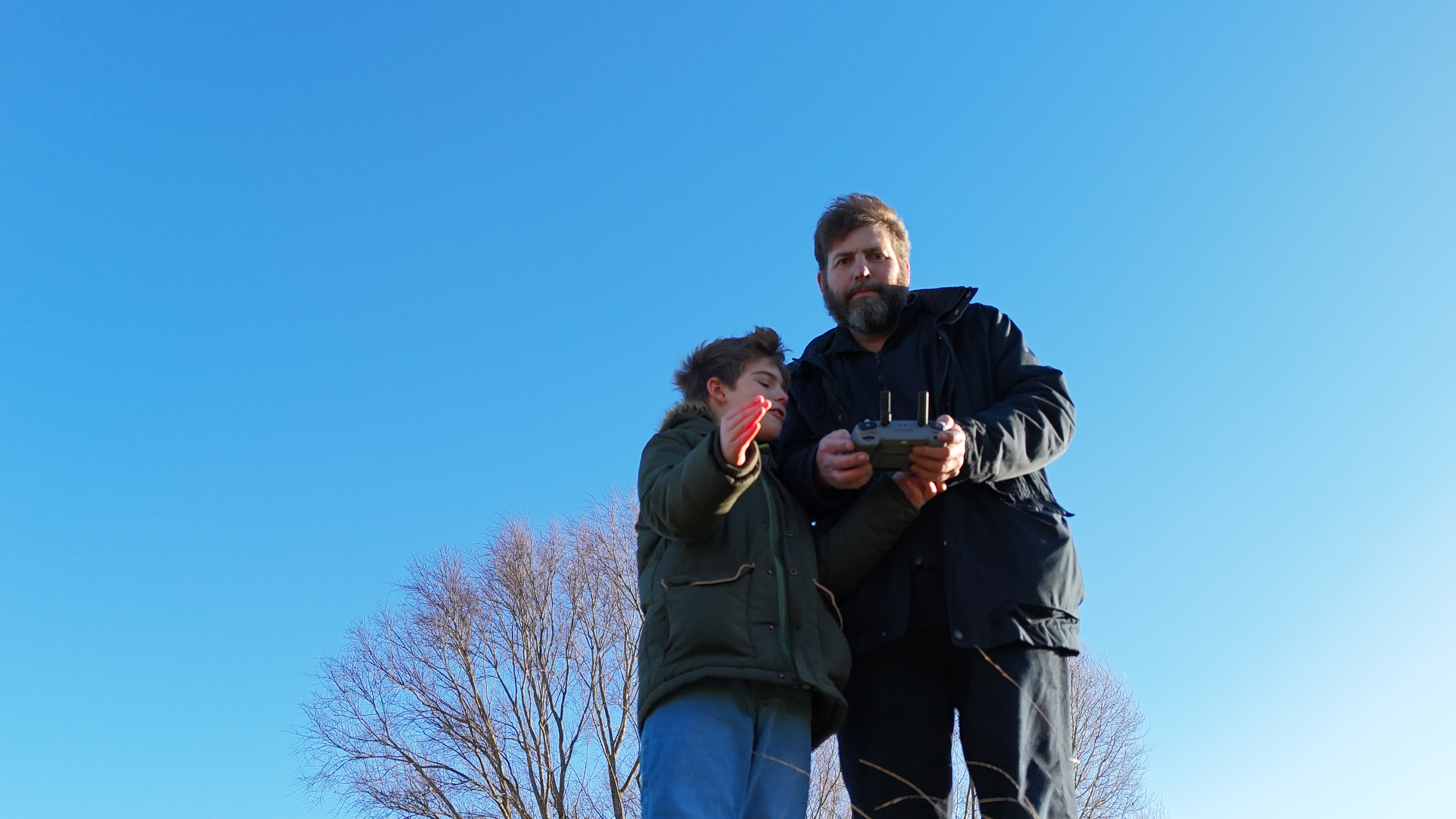
Sample video
The video shows a selection of shots at 4K which are not really in ideal light, but give you an idea of how the camera behaves. There are no real surprised if you've seen other DJI cameras – you'll get good, smooth 4K video. Look closely and you might spot a little more waving from side to side in when the drone is hovering, but I still get the impression you'll get some great shots for your social edits.
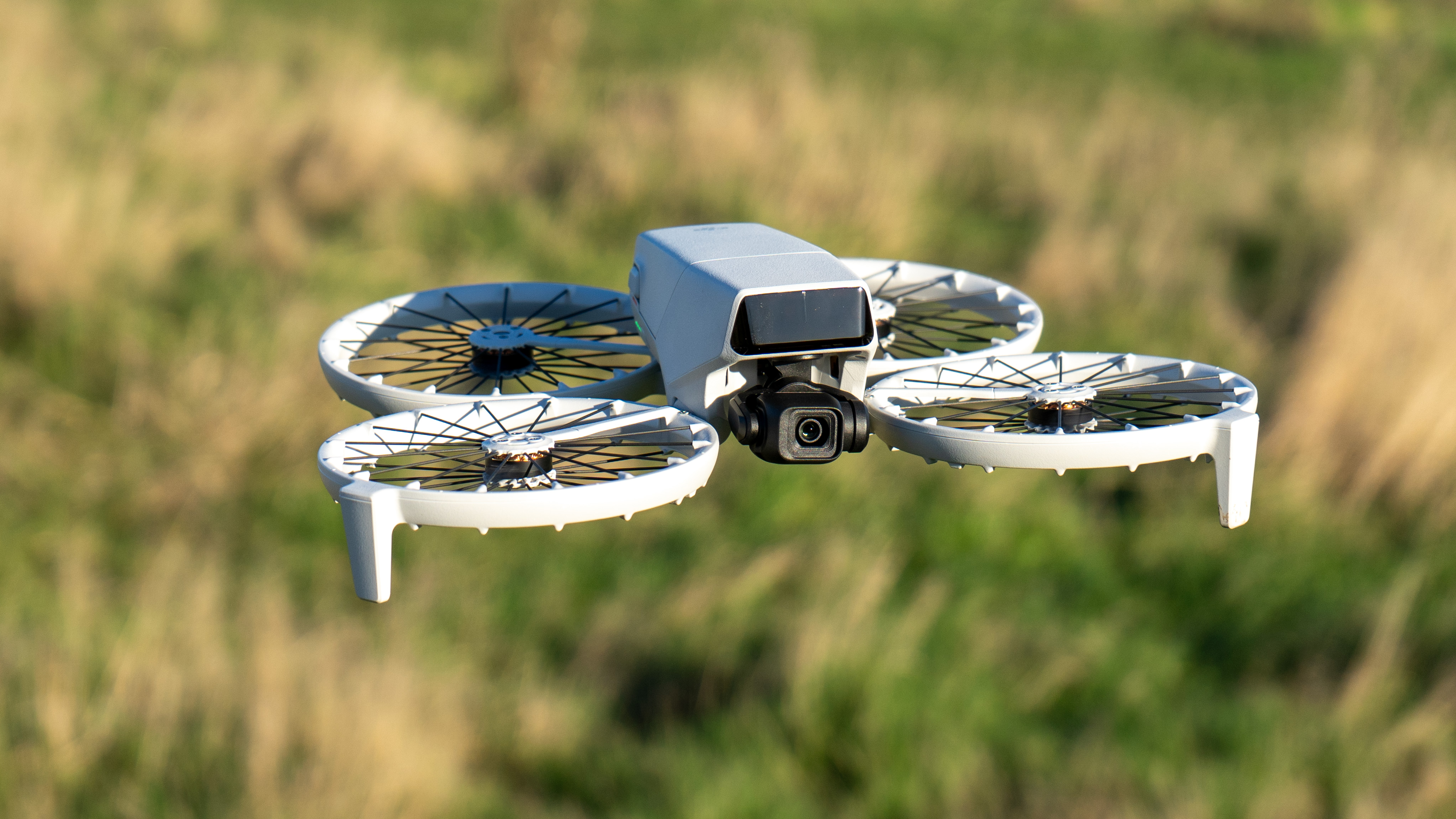
Overall verdict
I'll freely admit this is not the most beautiful design I've ever seen, but it is brilliant. It brings the one-tap functionality of DJI's Neo – or the competing HoverAir – into a more useful category for photographers, while being robust and portable enough to overcome battery life concerns and camera quality – at least for the vloggers that DJI is targeting!
Safety, too, is impressive – not just in terms of protecting from being clipped by the props; that same tech means it's easy to throw the device into a jacket pocket and feel reasonably confident too.
Sure, it was a bit disappointing that features like the Panorama aren't as sophisticated as the Air 3S, but that is a much more expensive (and heavier) drone. For people looking to head out and get clips to add to social, and to mix with their day-to-day, this is a brilliant choice with all the options you could reasonably hope for.
In other words, it might not be 5-stars for everyone, but if it seems like the right device for you, it really does seem to join all the dots, especially for what is effectively a new category.
Features | It's very hard to complain about the number of features on offer given the category. You're getting a RAW-capable camera AND pocketable auto-tracking as well as impressive range. | ★★★★★ |
Design | I admit I was sceptical, but DJI have me convinced. OK you might have to sacrifice a little wind resistance, but the pocket-ability, safety, and quality are hard to contest. | ★★★★★ |
Performance | The drone's camera is good compared to competitors, keeping pace with DJI's standards, but the extra drag factor of the spokes and rims mean the drone is (slightly) less able to cope with a breeze than some. | ★★★★☆ |
Value | With the DJI Mini 4K offering pretty decent video and RAW images for a lower cost of entry, the value proposition depends on how much you value the AI tracking. For me, since it works, it earned the 5th star. | ★★★★★ |
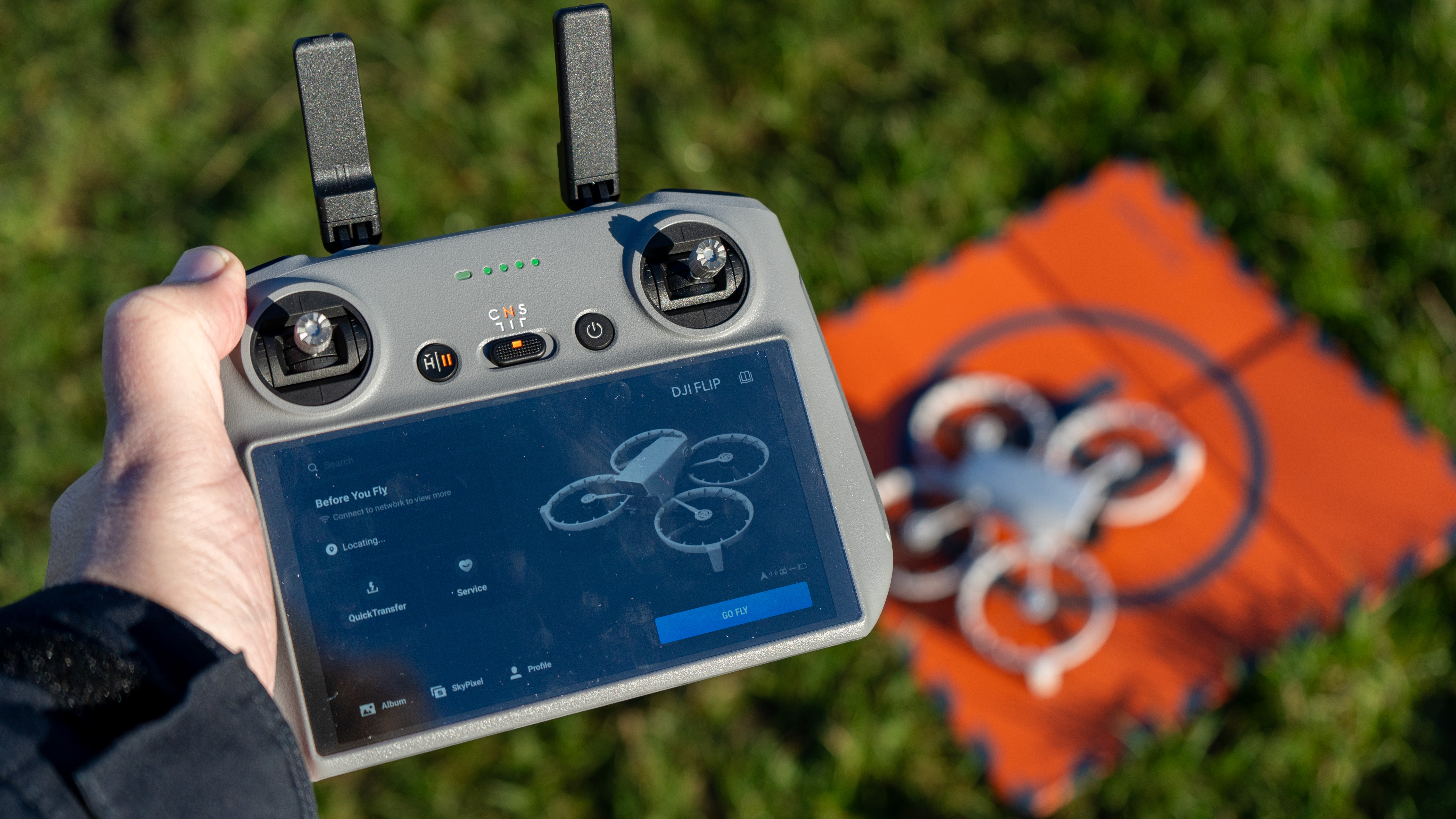
Alternatives
The DJI Mini 4 Pro is ideal if you're looking for a higher-quality lightweight drone, and have less need to protect the props, then the Mini 4 Pro is the best ultra-light camera drone on the market, bar none. I gave it 5-stars in my review in late 2023 and that's just as valid now.
The DJI Neo is the cheapest drone with this kind of AI tracking – and safety – making it very child-friendly (and a pick on our best drones for kids). It still manages 4K video (though not a full 3-axis gimbal) and has a lot of flexibility, including FPV control options, so it's worth a look.
How I test drones
As a qualified drone operator with commercial experience – and a lot of leisure time spent flying drones too – I've always found the best way to test a drone is to get out there and use it in the real world – and if it is a safe or family friendly one, do so with my son (a bit of a drone enthusiast too) if possible!

With over 20 years of expertise as a tech journalist, Adam brings a wealth of knowledge across a vast number of product categories, including timelapse cameras, home security cameras, NVR cameras, photography books, webcams, 3D printers and 3D scanners, borescopes, radar detectors… and, above all, drones.
Adam is our resident expert on all aspects of camera drones and drone photography, from buying guides on the best choices for aerial photographers of all ability levels to the latest rules and regulations on piloting drones.
He is the author of a number of books including The Complete Guide to Drones, The Smart Smart Home Handbook, 101 Tips for DSLR Video and The Drone Pilot's Handbook.

